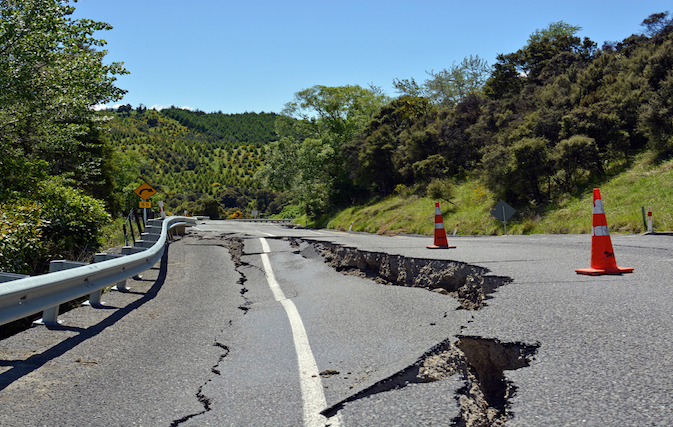KAIKOURA, New Zealand — In terms of human life, the magnitude 7.8 earthquake that hit New Zealand this month was relatively merciful: two fatalities. But geologically, it moved roads and mountains and even displaced the sea, leaving a formidable mark from which tourism, farming and life in general may need years to recover.
From the air, the power of the Nov. 14 quake becomes clear. It was strong enough to raise entire sections of the seabed and send hillsides tumbling across State Highway One, which winds along the coastline into Kaikoura. Until last week it was the main route for tourists heading south from the town of Picton for whale-watching boat trips; now it’s deserted.
“If you go from Kaikoura north, that road is a complete and utter mess,” Prime Minister John Key told several dozen locals during a trip to the area Thursday. “Like, it is way worse than anything I’ve seen. So just to get a bit of perspective, the whole mountain has moved in a number of places. And so the road, which used to go round the coast, looks like it’s going into a mountain.”
The geological changes on the northeastern coast of South Island will affect locals and the tourist season, which reaches its peak from December through February. This South Pacific nation of fewer than 5 million welcomes more than 3 million tourists each year.
The country was spared a larger catastrophe because the epicenter was far from any cities, and officials stress that most of New Zealand remains safe and unaffected.
But thousands who once used the South Island coastal road will need instead to drive a circuitous inland route. Transport authorities say that since the quake, traffic on that route has increased fourfold.
Even if the roads are restored, the future for the popular whale-watching trips in Kaikoura remains in doubt. That’s because the sea bed has risen so much that operators can only get their boats out to sea for a few hours each day during high tide. What once was ocean is now exposed rock.
Kauahi Ngapora, general manager of Whale Watch Kaikoura, said options include dredging the marina or building a temporary causeway to deeper water. He said the high tide now reaches to where the low tide once did, and the low tides are like nothing he’s ever seen before.
In the town of Waiau, a community pool had cracked open and lost all its water, and the changing rooms had collapsed. Locals have started an online campaign and raised some money for a replacement, but they have a long way to go.
Many residents were happy to see Key, viewing his presence as a sign the government was paying attention to the problems the quake left behind. For some, it became quite emotional.
“I’m just honoured to meet John. Am I allowed to call him that?” said Helen Beattie, describing how she’d embraced the prime minister. “I thought, ‘Wonder if I can get a hug?’ And I did.”
